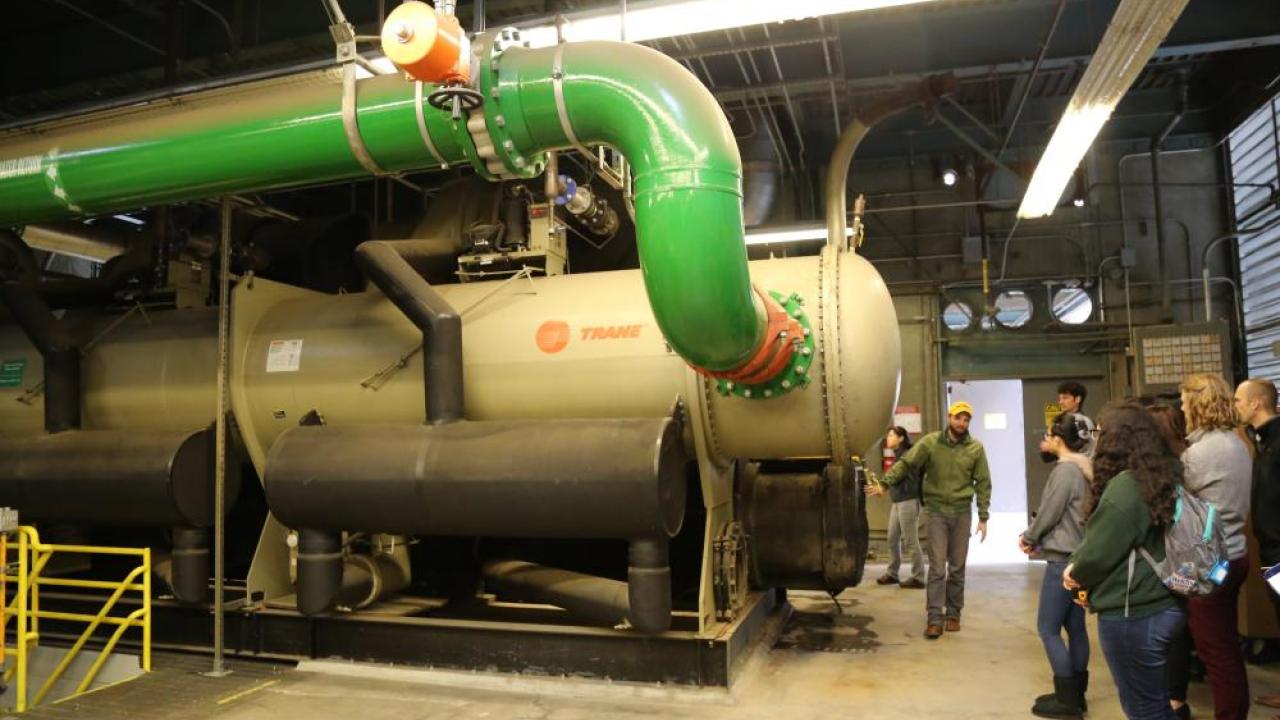
Regents Approve Design for Next Stage of Big Shift
The funding for the development of the preliminary plans for the next phase of the Big Shift was approved by the University of California Board of Regents on Jan. 19, 2022.
This stage of the project will include laying new hot water pipes and converting buildings in the “Sprocket district” and making significant additions and improvements to the Thermal Energy Storage (TES) plant.
Big Shift, small recap
The Big Shift is a largescale project moving our campus from steam-based heating to hot water based heating. A change on this scale requires laying miles of new pipe, converting the mechanical room of each building and updating infrastructure on a system-wide level. To make this major change achievable, construction is being broken up into more manageable portions. The first segment of construction, focused in the Quad district, is well underway with majority of the pipe laid.
The Sprocket district, while not as extensive as the Quad district, encompasses the Segundo and Reagan residence halls, the Student Health and Wellness Center, the ARC, and the University Credit Union Center, in addition to a handful of classroom and lab buildings.
Beyond more buildings and more pipes, this stage of the Big Shift will replace the oldest water chillers at the TES plant with heat recovery chillers and build the thermal energy storage tank for hot water. These infrastructure improvements will go a long way toward improving energy efficiency, according to Joshua Morejohn, an Energy Manager at Facilities Management who's on the working group for Big Shift.
"Chillers cool water for our cooling system by removing heat from the water." Morejohn said. "Right now the excess heat is just being discarded. The heat recovery chillers will let us use that heat to make hot water."
Our current infrastructure can only generate hot water by first making steam, a process that necessitates the use of fossil fuels. The heat recovery chillers will provide a different method — recycling heat that is already being generated. This much more efficient and greener process is only possible because of the shift to hot water; steam requires more heat than can be provided through recovery from a chiller. This infrastructure change exemplifies how Big Shift is moving the university toward a carbon-neutral, fossil-free future.
The change from steam to hot water also allows for the installation of a thermal energy storage tank. The hot water storage tank will function much like the chilled water storage tank does, providing flexibility and the opportunity for optimization.
The preliminary design will be further developed in the coming year, with construction slated to begin in 2023 and continue into 2024.
To stay up to date with all things Big Shift, subscribe to the newsletter.
